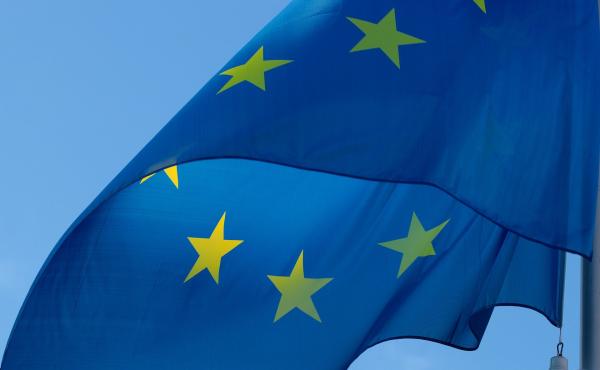
The ECGI blog is kindly supported by

Assets beyond the balance sheet: Why antitrust regulators overlook the M&A they may care about most
The US Federal Trade Commission (FTC) and the Department of Justice (DOJ) use several tools to determine whether corporate mergers and acquisitions (M&A) are potentially anticompetitive. One key screening criterion these regulators use to evaluate whether a deal is anticompetitive is the size of the target and acquirer’s assets. However, firms’ assets in the US are determined according to generally accepted accounting principles (US GAAP), which ignore nearly all internally generated intangible capital, such as technology, brands, and in-process R&D. This omission may be particularly problematic because a focus of the FTC and DOJ has been consolidation in the technology and pharmaceutical sectors, which rely heavily on intangible capital. In this paper, we explore the consequences of ignoring intangible capital in the antitrust scrutiny of M&As.
M&As have the potential to generate synergies and efficiencies, benefiting shareholders and consumers alike. But these deals can also be anticompetitive, resulting in higher prices and limited choices for consumers. The FTC and DOJ determine whether an M&A is potentially anticompetitive under the Hart-Scott-Rodino (HSR) Antitrust Improvements Act of 1976. HSR determines whether the FTC and DOJ review deals based on the transaction size and asset thresholds. In particular, for deals below a certain size threshold, the FTC and DOJ review deals if the targets and acquirers’ assets exceed a certain threshold according to GAAP. However, US GAAP ignores intangible capital because most costs associated with it are immediately expensed and, therefore, not treated as an asset.
Although US GAAP does not capitalize most intangible capital, it is becoming increasingly important in the US economy. This increase is evident in the values assigned to acquired company assets after the merger was completed: in 2001, the average value of intangible capital to tangible was four to one; by 2019, that ratio grew eight to one. This dramatic rise suggests that regulatory criteria for evaluating M&As based on asset-size thresholds overlook an increasingly substantial portion of firms’ values, potentially allowing anticompetitive mergers to escape scrutiny.
Our analysis reveals that many acquisitions bypass premerger scrutiny solely because intangible capital is not considered in the asset threshold. These deals, which are not reported to antitrust regulators, represent a significant portion of M&A activity and are similar in size to those subject to the asset threshold. We estimate that if intangible capital were considered in the asset threshold, the FTC and DOJ would review an additional 90 horizontal deals, equating to approximately $32 billion of deal value per year.
We examine whether these unreported deals are potentially anticompetitive, as bypassing regulatory scrutiny may allow mergers to occur that would otherwise be blocked or require asset divestitures. Several findings suggest they may be. Even though acquirers pay more for these unreported deals, when unreported deals are announced, the acquiring firms have a 3 – 6% higher announcement return when there is a product-market overlap between the target and the acquirer. These returns are concentrated when the acquirer is purchasing a firm with intangibles. Rivals of the acquiring firms also benefit, as we observe they have an average return of 0.7% around the merger announcement. These announcement returns all suggest these unreported deals can be anticompetitive.
We also look at what happens after the deals close to see if unreported deals are more likely to appear anticompetitive. Antitrust regulators are particularly concerned about product-market consolidation because it can reduce customer choices and raise prices. Consistent with this concern, if an unreported deal consolidates a product market, the acquirer reports higher margins, suggesting these deals lead to higher prices.
Within the pharmaceutical industry—a focus of antitrust regulators—unreported deals tend to involve competitors engaged in similar research. We find that acquired projects are more likely to be discontinued, suggesting that firms may make these acquisitions to eliminate potential competition. Despite the greater likelihood of discontinuation, we observe other entrepreneurs engaging in “copycat” research as those acquired and discontinued, possibly in the hope of their research also being acquired. Assuming these entrepreneurs could have instead researched more novel therapies, our findings suggest a deadweight loss from these deals.
Our paper documents how omitting intangible capital from accounting assets can lead to anticompetitive deals avoiding antitrust review. It underscores the intricate relationship between accounting, regulation, and market dynamics. Although the FTC recognizes that firms acquiring smaller rivals in high-intangible industries can stifle future competition, if it does not review potentially harmful deals because they are below the asset threshold, there is little the FTC can do. Our study is especially timely as the FTC is considering modifying the HSR rules for the first since their inception. Under current HSR rules, our results suggest the growth of intangible assets may exacerbate market consolidation through unreported mergers in the sectors most concerning to consumers.
_____________________________
By Charles McClure (Booth School of Business, University of Chicago), John Kepler (Graduate School of Business, Stanford University), and Christopher Stewart (Booth School of Business, University of Chicago)
The ECGI does not, consistent with its constitutional purpose, have a view or opinion. If you wish to respond to this article, you can submit a blog article or 'letter to the editor' by clicking here.





